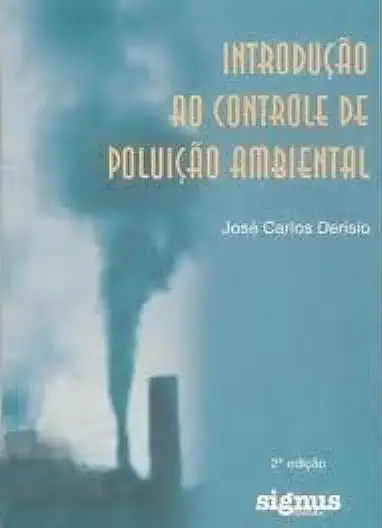
Introduction to Environmental Pollution Control - José Carlos Derisio
Introduction to Environmental Pollution Control: A Comprehensive Guide to Understanding and Mitigating Pollution
Overview
In today's world, environmental pollution has become a pressing concern that affects the health of our planet and its inhabitants. "Introduction to Environmental Pollution Control" by José Carlos Derisio offers a comprehensive and accessible guide to understanding the various types of pollution, their sources, and the strategies employed to control and mitigate their impact on the environment.
Understanding Pollution
Pollution refers to the introduction of harmful substances or contaminants into the environment, leading to adverse effects on human health, ecosystems, and the overall quality of life. This book provides a thorough examination of different pollution types, including air pollution, water pollution, land pollution, noise pollution, and radioactive pollution. Each chapter delves into the sources, characteristics, and consequences of these pollutants, equipping readers with a comprehensive understanding of their detrimental effects.
Air Pollution
Air pollution, a major contributor to respiratory illnesses and environmental degradation, is extensively covered in this book. Derisio explores the sources of air pollutants, such as industrial emissions, vehicle exhaust, and agricultural activities. The book also discusses the formation of smog, acid rain, and the depletion of the ozone layer, highlighting the urgency of addressing air pollution issues.
Water Pollution
Water pollution poses significant threats to aquatic ecosystems and human health. "Introduction to Environmental Pollution Control" examines the causes and consequences of water pollution, including contamination from industrial wastewater, sewage discharge, agricultural runoff, and oil spills. The book emphasizes the importance of water quality management and the implementation of effective wastewater treatment technologies.
Land Pollution
Land pollution, often overlooked but equally detrimental, is addressed in this book. Derisio explores the sources of land pollution, such as improper waste disposal, mining activities, and deforestation. The book highlights the long-term effects of soil contamination, including loss of soil fertility, groundwater contamination, and the disruption of ecosystems.
Noise Pollution
Noise pollution, a growing concern in urban areas, is examined in this book. Derisio discusses the sources of noise pollution, including traffic, construction, and industrial activities. The book explores the adverse effects of noise on human health, such as hearing loss, sleep disturbance, and stress-related illnesses.
Radioactive Pollution
Radioactive pollution, a consequence of nuclear accidents and the use of radioactive materials, is also covered in this book. Derisio explains the sources of radioactive pollution, including nuclear power plants, uranium mining, and medical facilities. The book emphasizes the importance of radiation safety measures and the management of radioactive waste to minimize the risks associated with radioactive pollution.
Pollution Control Strategies
"Introduction to Environmental Pollution Control" goes beyond merely identifying pollution problems; it also presents practical strategies for pollution control and mitigation. The book discusses various pollution control technologies, such as air pollution control devices, wastewater treatment plants, and solid waste management systems. Derisio emphasizes the significance of environmental regulations, international agreements, and sustainable practices in combating pollution.
Conclusion
"Introduction to Environmental Pollution Control" by José Carlos Derisio is an invaluable resource for anyone seeking to understand the complexities of environmental pollution and the measures required to address them. With its comprehensive coverage of pollution types, sources, and control strategies, this book serves as an essential guide for environmental scientists, policymakers, students, and anyone concerned about the health of our planet. By gaining a deeper understanding of pollution and its control, we can work together to create a more sustainable and healthier environment for future generations.